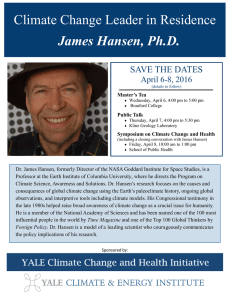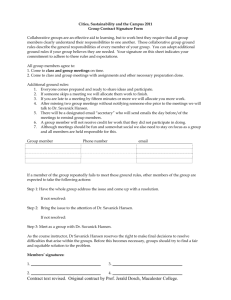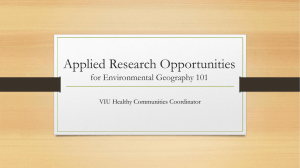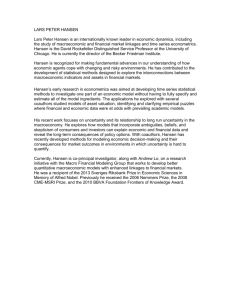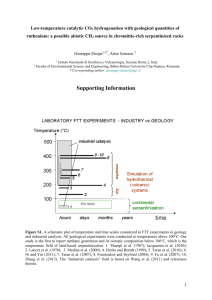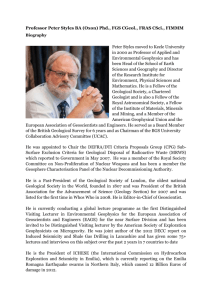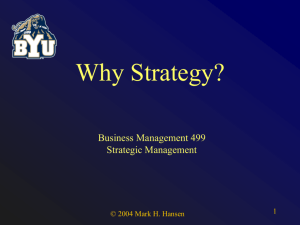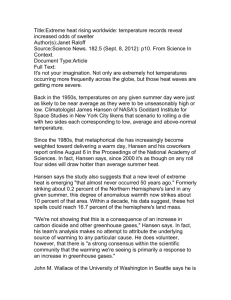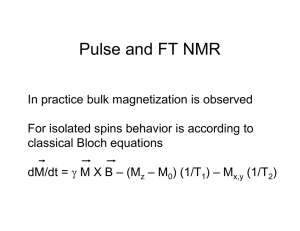Final exam
advertisement
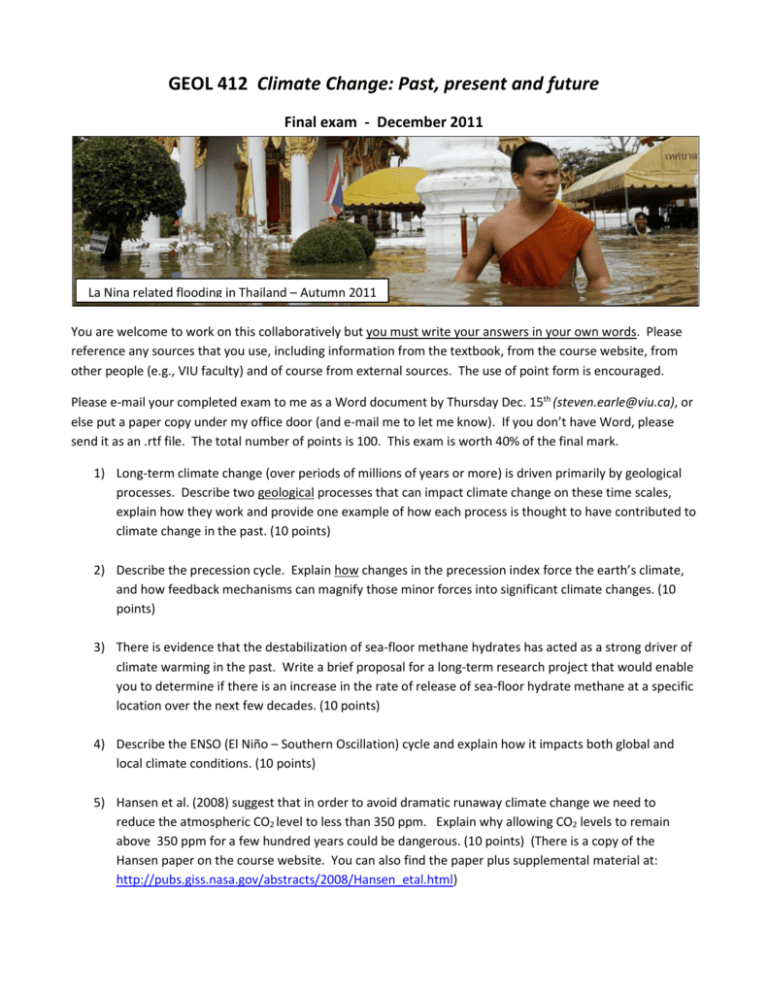
GEOL 412 Climate Change: Past, present and future Final exam - December 2011 La Nina related flooding in Thailand – Autumn 2011 You are welcome to work on this collaboratively but you must write your answers in your own words. Please reference any sources that you use, including information from the textbook, from the course website, from other people (e.g., VIU faculty) and of course from external sources. The use of point form is encouraged. Please e-mail your completed exam to me as a Word document by Thursday Dec. 15th (steven.earle@viu.ca), or else put a paper copy under my office door (and e-mail me to let me know). If you don’t have Word, please send it as an .rtf file. The total number of points is 100. This exam is worth 40% of the final mark. 1) Long-term climate change (over periods of millions of years or more) is driven primarily by geological processes. Describe two geological processes that can impact climate change on these time scales, explain how they work and provide one example of how each process is thought to have contributed to climate change in the past. (10 points) 2) Describe the precession cycle. Explain how changes in the precession index force the earth’s climate, and how feedback mechanisms can magnify those minor forces into significant climate changes. (10 points) 3) There is evidence that the destabilization of sea-floor methane hydrates has acted as a strong driver of climate warming in the past. Write a brief proposal for a long-term research project that would enable you to determine if there is an increase in the rate of release of sea-floor hydrate methane at a specific location over the next few decades. (10 points) 4) Describe the ENSO (El Niño – Southern Oscillation) cycle and explain how it impacts both global and local climate conditions. (10 points) 5) Hansen et al. (2008) suggest that in order to avoid dramatic runaway climate change we need to reduce the atmospheric CO2 level to less than 350 ppm. Explain why allowing CO2 levels to remain above 350 ppm for a few hundred years could be dangerous. (10 points) (There is a copy of the Hansen paper on the course website. You can also find the paper plus supplemental material at: http://pubs.giss.nasa.gov/abstracts/2008/Hansen_etal.html) 6) This schematic diagram (from David GaumontGuay) provides the theoretical basis for determining if forest harvesting in any particular area will have a net positive or negative effect on C sequestration in that area. List some of the variables that you’ll need to know to use this diagram to determine if, over the long term, clear-cut logging will be a net C source or sink in any specific region. Describe a scenario in which logging will lead to a forest area being a net C sink, and one in which it would be a net source. (10 points) 7) The following diagram, from Lenton and Vaughn (2009), shows a number of climate engineering options that could allow us to reduce climate forcing in the future. Pick one of the following options: a) Stratospheric aerosols, b) Air-capture and geological storage, c) Nutrient addition or d) Bio-char, explain how it is supposed to work, and describe some of the pros and cons of the idea. (10 points) (The Lenton and Vaughn paper is on the course website.) 8) It is forecast that ocean water pH will drop several tenths of a unit over the next millennium. Describe which types of organisms are likely to be affected, and why and how they’ll be affected. (10 points) 9) Oxygen isotope, methane and ice accumulation rate data from the Greenland GRIP ice core for the past 40,000 years are shown on the following graphs. Describe the origins of some of the significant features seen in these curves, and explain the relationships amongst the three variables. (20 points)
